THERE ARE INFLUENCERS, and then there are influencers.
When we hear the word “influencers,” we tend to think of social media personalities who show off new products and talk about trends — and there’s nothing wrong with that. But for this story, we wanted to write about people who are putting their stamp on the jewelry trade by going above and beyond the scope of their own businesses to make the industry a better place.
The people we’ve chosen to cover run the gamut of roles — from retail store owners to consultants, designers, wholesalers and organization leaders. They all have two things in common: a passion for improving the lives of others in our industry and the willingness to put in the elbow grease to make that happen.
It takes a lot to run a small business. It takes even more to give others a helping hand — whether that be free advice, money, time, a place to hang out or opportunities for growth. Here, we recognize 10 people who are doing just that … and all with a smile on their faces. These are their stories.
THE IDEA MAN
Stephen Barnes is racking up accolades from colleagues for his out-of-the-box thinking. His inventiveness at two industry gigs — owner of a jewelry store and president of a buying group — led some retailer respondents of INSTORE’s Brain Squad to urge this magazine to give him some praise.
Barnes is a second-generation retailer at Barnes Jewelers, Inc., in Goldsboro, NC, who is fully embracing his role as successor. Among his ideas are some events that predecessors probably never dreamed of hosting. A Botox, Bronze & Bling event ahead of Mother’s Day 2023 enlisted a doctor and spray tan salon to visit the store to pamper moms.
“We do well when we collaborate with others outside of jewelry,” says Barnes. “That event was a huge success, and we donated a portion of sales to a women’s organization in town.”
Barnes also sponsored the 75th anniversary celebration of nearby Grainger Stadium, the Carolina League’s second oldest ballpark. They marked the diamond anniversary with giveaways and an Easter egg hunt for kids.
But the store isn’t the only place where Barnes is wowing folks with clever concepts. Barnes was hired last August to serve as president of the Independent Jewelers Organization (IJO), a 52-year-old buying group based in Southport, CT.
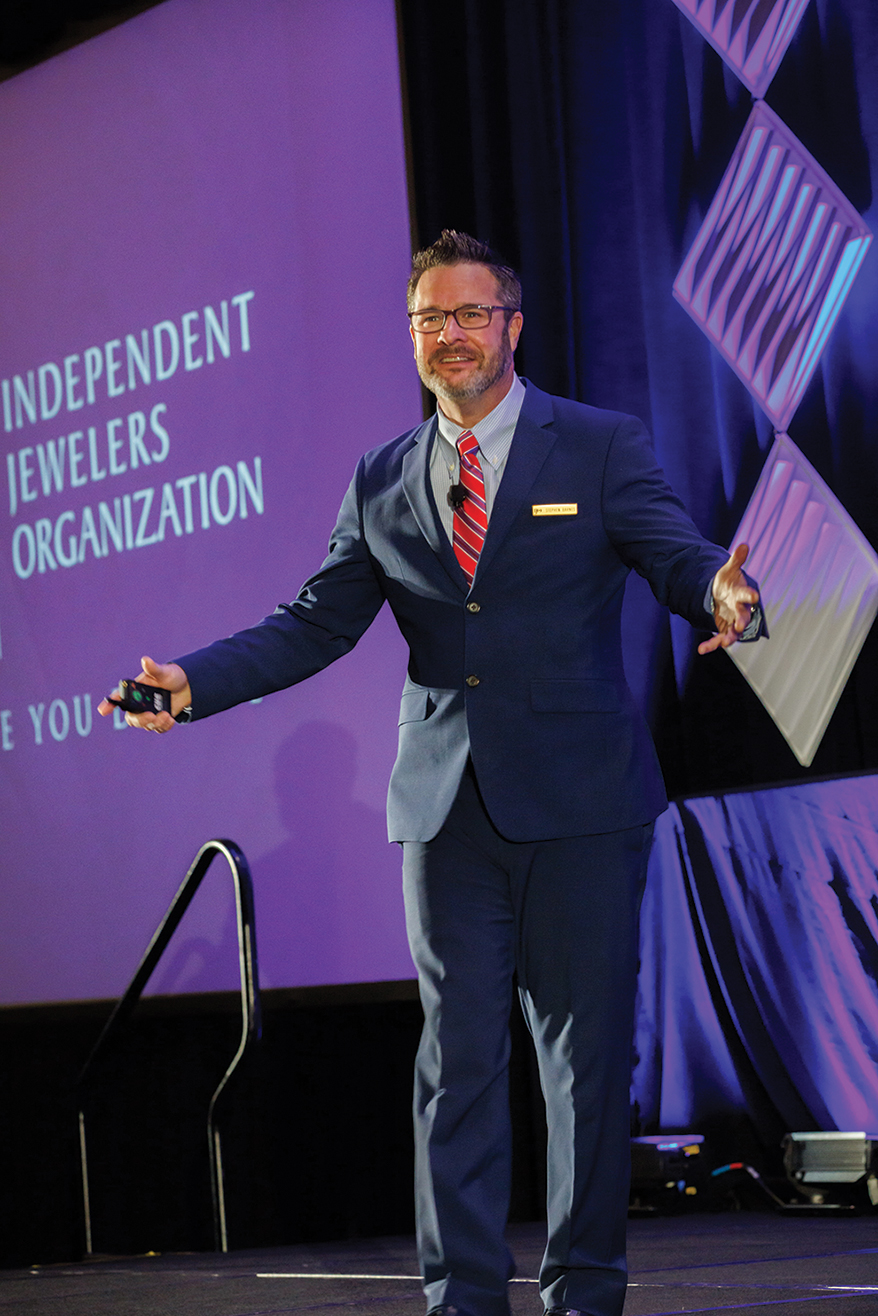
Stephen Barnes was hired in 2023 to serve as president of IJO.
For IJO, Barnes enlisted fellow influencer William Jones IV of Jewelry Sales Academy and Sissy’s Log Cabin Jewelers to help members better train staff. “His platform offers video training that we offer to member stores in packages,” he explains.
At IJO conferences, even more tailored education occurs. In Dallas this past March, Barnes moderated a panel on next-generation tactics and led a seminar entitled “IJO Business Course: Your Store.” Four years of specializing in succession planning at The Edge Retail Academy prepared him for some deep dives with fellow merchants on what transitions could look like. Plus, a three-day workshop he led in Florida in January enabled him to help younger jewelers navigate their new landscape.
“I grew up in the industry — I know what it’s like to be in the family business in your 20s and 30s,” he says.
Content included basics like how to read financial statements, and a recent follow-up event featured a panel of five peers who fielded audience questions on tricky issues. “We tried to help attendees understand how to get to the next stage of business,” explains Barnes.
Advertisement
THE TRAINING GURU
Despite being a younger member of the Sissy’s Log Cabin jewelry family, William Jones IV is already in the driver’s seat when it comes to training. He joined the company as vice-president of operations in 2016, a role in which he was tasked with onboarding new hires; it was challenging considering he had to drive up to three hours at a time to reach some of the retailers’ five stores.
“I was traveling as much as 30 hours a week,” he says. “We wanted to build more stores but couldn’t because of recruiting and training.”
Frustrated with the scenario, he started recording himself giving instruction on basics like how to greet customers and how to display inventory by price point. The success of those efficient recordings allowed Jones to delegate some aspects of training to the new hires themselves, who could watch his videos and be ready for more advanced instruction upon his arrival in stores. These moves paved the way for even more video guidance, and eventually, entire modules were built and tailored to the Sissy’s team. This allowed the retailer to hire more efficiently, open another store and for Jones to earn a promotion to chief operating officer in 2022.
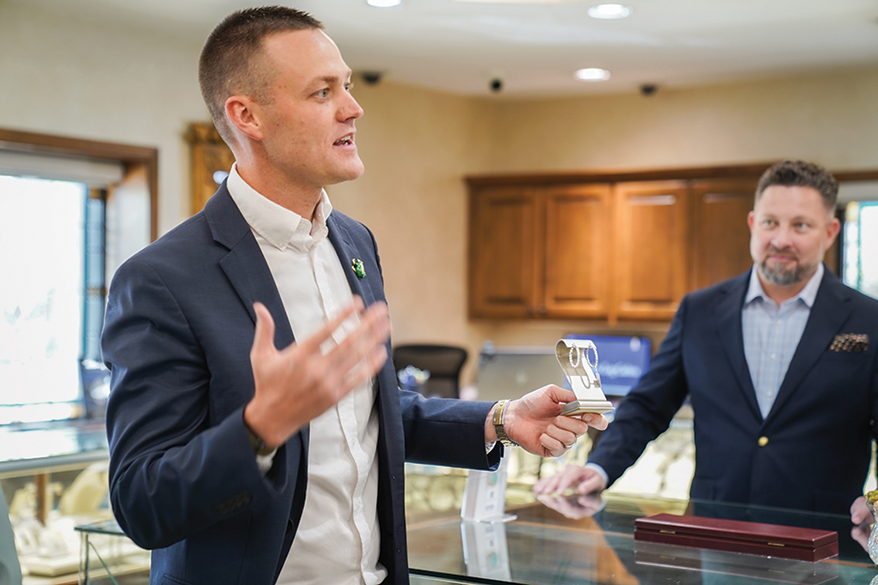
William Jones IV leads a sales training presentation for the Jewelry Sales Academy
“Now we can hire someone outside of industry and train them in six months instead of up to three years,” Jones explains.
The sales management system also permitted Jones a peek into the training progress of staffers across all locations; he need only log in to see chapter completions. And if Jones wants associates to increase diamond fashion sales, he has “a pathway, numbers, and directions for how to get there,” he adds.
The training model has been so triumphant that Sissy’s opened it up to other retailers to use. Enter the Jewelry Sales Academy, of which now Jones is the founder and CEO.
“We have nearly 1,000 videos and have completed upwards of 30,000 lessons,” he explains. “We’ve trained about 1,500 sales associates.”
And great news for retailers: Jones and his team can customize training and assets.
“We build your own store’s university with your logo, policies, training manuals and fundamentals,” he adds. “We’re also opening portals for vendors to reach retailers and are partnering with Southeast Arkansas College on a technical program to train bench jewelers. We’ve had a lot of referrals but are also exhibiting at some trade shows, including JCK LUXURY 2024.”
THE HUMAN RIGHTS ACTIVIST
“The way to right wrongs is to shine the light of truth upon them.” This quote from late 19th-early 20th century journalist and activist Ida B. Wells-Barnett is a guiding principle for jewelry designer Susan Wheeler, who saw wrongs being committed in the global jewelry supply chain and decided she had to do something about it.
“I did and still do love the jewelry industry, but when I heard about the human rights abuses that were allegedly happening, it was shocking to me. It really changed me,” Wheeler says.
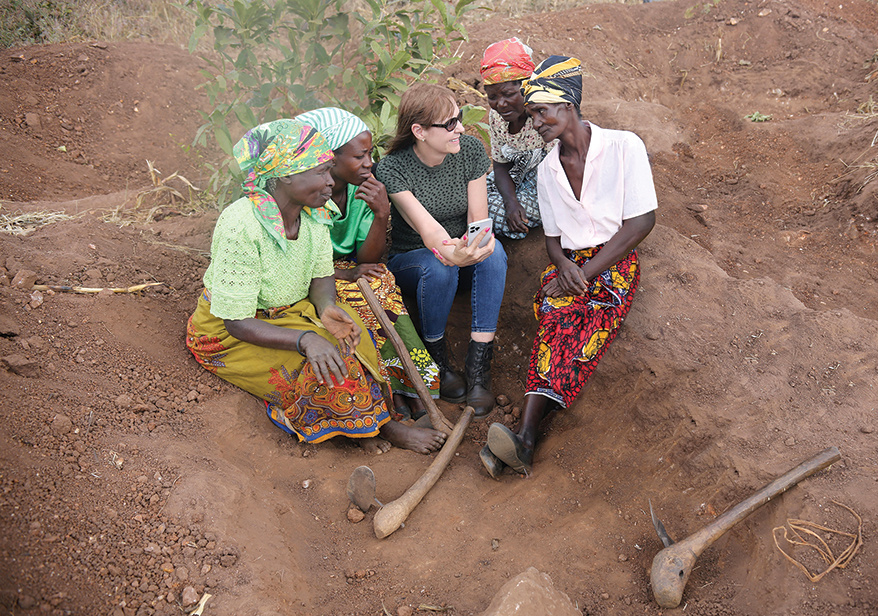
Susan Wheeler (center) shows one of her Malawi rhodolite necklaces on her phone to rhodolite miners in Malawi.
In 2017, Wheeler launched the Chicago Responsible Jewelry Conference in her home city. The conference is unique in that it brings together stakeholders annually from all along the jewelry supply chain, as well as government and NGO representatives, to discuss the state of sustainability and responsibility in the jewelry industry and how it can be improved.
As that initiative gained momentum, participants wanted to keep the discussion going throughout the year. So Wheeler started the Responsible Jewelry Transformative, a nonprofit dedicated to helping the jewelry industry achieve sustainable development goals through education, initiatives and creating connections across the global supply chain. She also got involved in gem sourcing through the creation of Virtu Gem (along with co-founders Monica Gichuhi and Jessica Hudson), which opens markets directly from mining communities to jewelers across the world using blockchain technology.
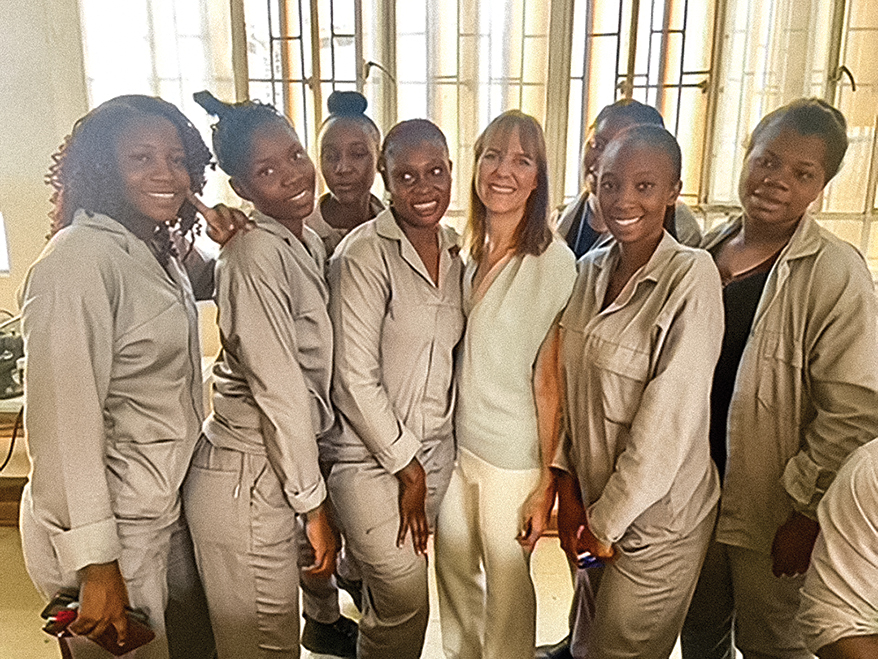
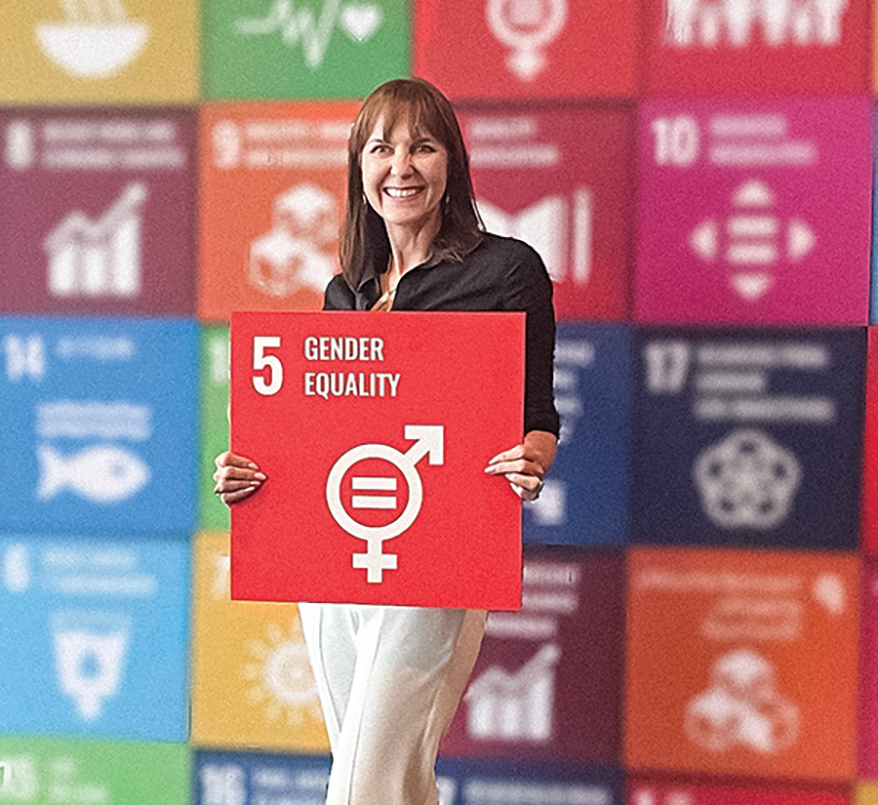
But she didn’t stop there. Wheeler has begun working with the United Nations under two separate initiatives: UN Women and the UN Fashion Lifestyle Network. She travels to New York for UN meetings four times a year, advocating against gender-based violence, sex trafficking, water pollution, dangerous working conditions and other problems faced by residents of mining communities in Africa.
In order to devote more time to her cause, Wheeler has pulled way back on her jewelry design business. “I don’t do a lot of jewelry work except for my collectors,” she says. “I can’t travel and do trunk shows anymore. I go to Africa two to three times a year now.”
Her advice to jewelry retailers is to seek out vendors who are truly intentional about where they source their goods. “You can buy Fairmined gold, recycled gemstones, it’s so much easier than it used to be for a small jeweler to do that. Now you can get certified diamonds that are recycled, it’s really kind of amazing.”
That said, she urges retailers to look beyond the marketing spiel given by suppliers. “We’re marketed to by large-scale mining companies, which is fine, but you have to also see the truth. There are good things happening and lots of good initiatives, but there are also things we need to see and work on.”
THE RETAIL INNOVATOR
Lisa Bridge excels at retail inventiveness — not an easy task considering her legacy. Bridge is following in the footsteps of 112 years of relatives before her who built up the Ben Bridge network of 35 stores west of the Mississippi River. Still, she has effectively enhanced operations for the last five years as the company’s president and CEO.
Efforts include ones from which other merchants can learn. For example, when the U.S. sanctions on Russian diamonds took root, Bridge, in the role of president of the American Gem Society (AGS) board of directors, shared regulatory resources. She provided assets that Ben Bridge was using—a template letter and pledge form—that gave AGS a foundation for guidance to share with members to share with their suppliers to encourage compliance and supply chain integrity.
Peers appreciate the clear instructions, ones they can “put into practice right away,” she explains.
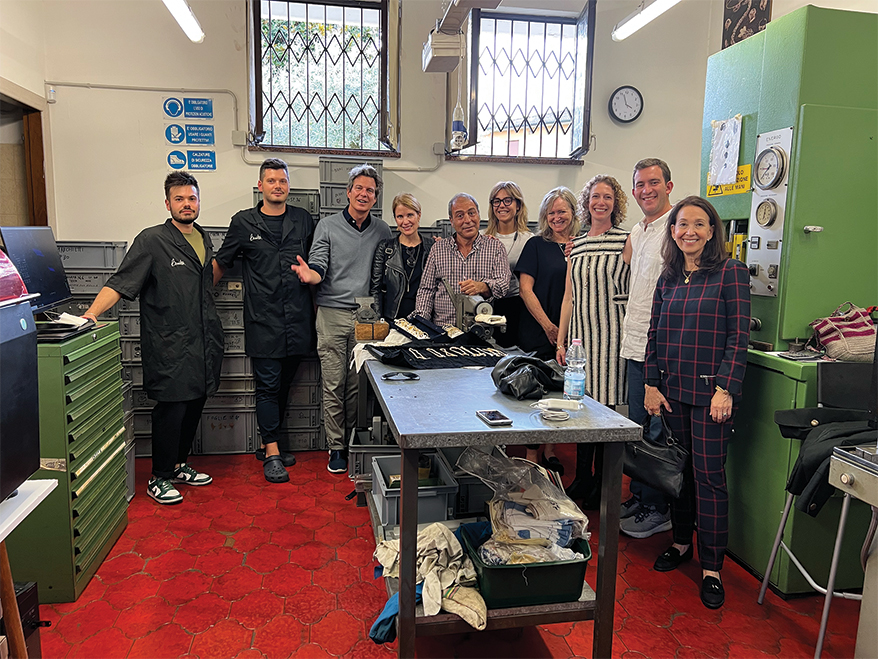
Lisa Bridge (third from right) with a group of editors and jewelry craftspeople in Italy

A creative outside-the-physical-store move took place a year ago when Ben Bridge took part in Metaverse Fashion Week. This four-day virtual experience involved many well-known brands (think DKNY) establishing marketplaces in a virtual world called Decentraland, “the first decentralized metaverse and the only one that is open source,” according to the platform. Ben Bridge took part in the experience to reach new customers through storytelling, quests, games, and, not surprisingly, some virtual bling, including a diamond leisure suit and crown.
“In the Metaverse, everything is bigger and more playful,” explains Bridge. “You can do things in a digital world that you could never do in a physical one. There’s also a relevance for users, giving a fresh take, a relatability, and an approachability to Ben Bridge.”
There are storytelling efforts in stores, too; visitors can now see curio cabinets filled with mineral specimens and tools used by cutters to bring rough stones to life. “It’s easy to assume people know what has gone into making a piece of jewelry, but most customers don’t know the lengths to which we go,” says Bridge.
Another undertaking involves giving journalists a glimpse of how jewels get to market. Last year, Bridge took some to Italy for an up-close look at some of the gold craftsmanship the brand sells while another group went to Botswana to see the journey of a diamond. All efforts aim to bring sourcing stories to life and “add color to what we do,” she adds.
Advertisement
THE ATTENTIVE EDUCATOR
The Plumb Club ain’t your daddy’s Plumb Club anymore.
Thanks to the Plumb Club board and executive director Lawrence Hess, the Plumb Club has quickly evolved from traditional JCK Show pavilion into a dynamic organization that educates, innovates and connects suppliers and retailers 365 days a year.
“In 2017, we were looking at what we do as an organization,” says Hess, who began as executive director in 2009. “We knew that we had our pavilion at JCK and we do that well. But we do the show for four days and then everyone goes their separate ways. So, we said, how do we leverage that into something that’s valuable for our members and the retailers? How can we take that four days and carry it out throughout the year?
“We sat down and created a detailed strategic plan. That’s where the online Jewelers Resource Center came from. That’s where our involvement with other organizations came from. That’s where [our recent education conference] Symposium came from.”
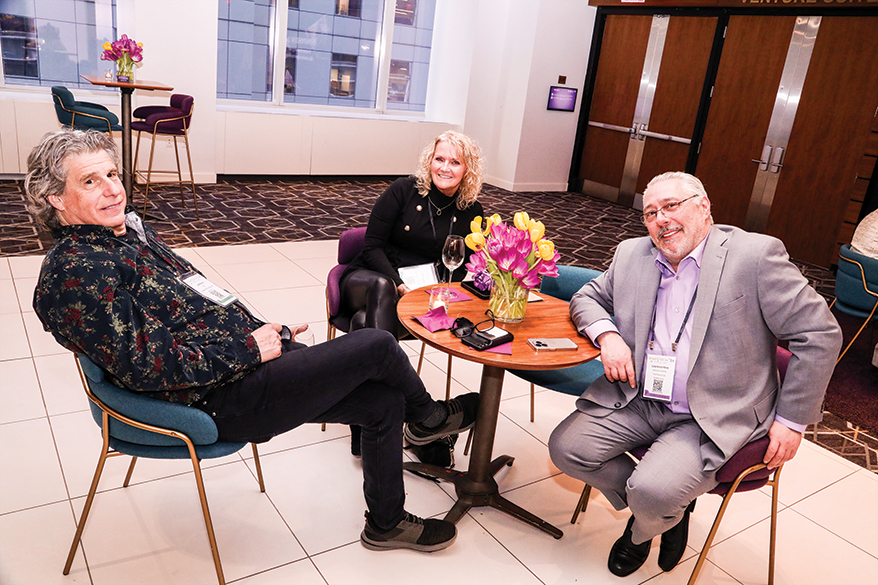
Lawrence Hess (right) at the recent Plumb Club Symposium with Je Weiss and Tracy Lewis of Glennpeter Jewelers in Albany.
When the Covid pandemic began in 2020, Hess and his board, along with marketing director Michael O’Connor, accelerated their plans for the TPC 365 online platform, which allows retailers to connect with suppliers on video calls that have far greater capability than Zoom for showing product. The platform also gives retailers access to up-to-the-minute education and webinars, as well as virtual showrooms for Plumb Club members. “We wanted to make it an ongoing thing, not just something where you put up information and leave it,” says Hess.
Why education? Because that’s what their constituents needed, Hess says. “We spoke to a group of retailers and asked them what was missing in their relationships with their vendors. Overwhelmingly, what we heard was education. There wasn’t a place they could go for information that wasn’t self-serving. The information was always through the lens of each company’s product, not just for the benefit of putting out information.”
Hess also directed a consumer research project to provide Plumb Club suppliers and retailers with insights into consumer jewelry buying preferences. The first survey was conducted in 2021, and the second in 2023, with INSTORE acting as a partner to distribute the research results.
It all started with listening, says Hess. “We took the time to stop and look at where the voids were. This was the one that we really felt was there and that we could fill,” he says. “I wouldn’t say we’re finished, but we’re definitely getting there.”
THE CONSTANT HELPER
When we spoke to Aleah Arundale of wholesaler Olympian Diamonds for this story, the first thing she said summed her up perfectly: “I like to help people all day every day.”
Before she created Jewelers Helping Jewelers (JHJ), the industry’s most widely used social networking group with more than 30,000 members, Arundale was already well known as one of the most helpful and enthusiastic people in the jewelry business. She stood out at trade shows in glittering dresses, often wearing a tiara and a sash and always ready for conversation and learning. She also created and continues to send a weekly “Jewelry Sales Tips Newsletter” to retailers, which she’s done for the past 15 years.
“I grew up in my family’s retail store and saw how hard that was,” says Arundale. “There’s such a scope to being a jewelry store owner. The breadth of information needed is just so vast. I thought we needed somewhere that we could help each other; no one knows everything.”
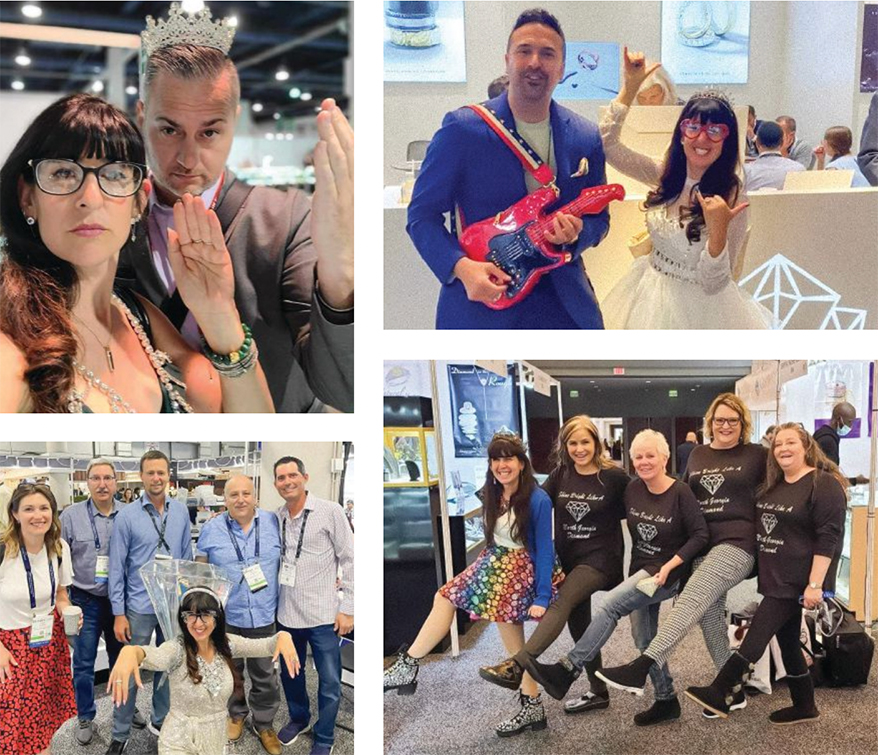
Aleah Arundale is always the life of the party at trade events and makes connections everywhere she goes.
That’s why she launched JHJ in 2017. “When a vendor joins, I tell them they are a guest and they’re just there to help retailers. I try to make it all about the retailer.”
Two years ago, Arundale began receiving a lot of messages from jewelers through JHJ that they had been robbed. “The spike was so dramatic,” she says. She began calling everyone she could think of in law enforcement and jewelry security to ask, “If we could do one thing to make everyone safer, what would it be?”
She got her answer from Greg “Dutchy” Holland-Merten of security specialists HMH Consultants: “Every retailer, when they get hit, should alert their five closest neighbors.” That inspired Arundale to launch a second Facebook group, the JHJ Jewelers Crime Alert Network, which now has over 7,600 members.
“It was so user-friendly that we have caught a lot of bad guys,” she says. She also started a Facebook group for retailers who have been victims of robberies called Jewelers Supporting Jewelers, in which members can post about their trauma and help others who have been through similar situations.
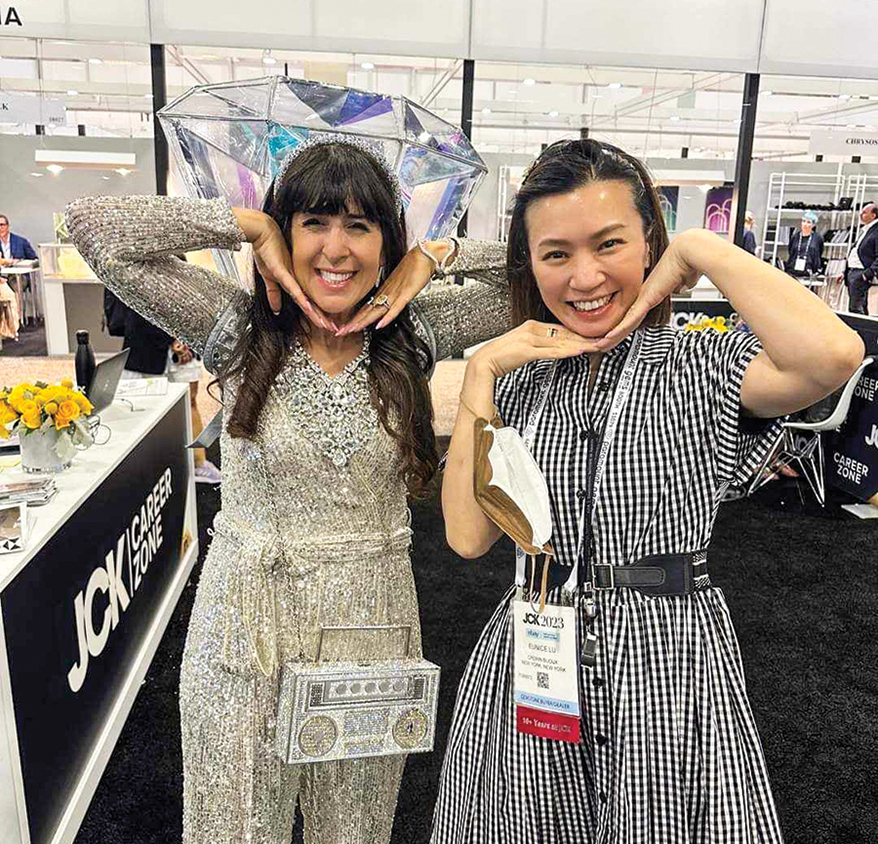
Arundale also organizes annual charity drives on JHJ, which have benefited gem miners, an impoverished diamond cutting village in India and people suffering from blindness in Ethiopia, among others. She also coordinates an annual JHJ trip to build community. This year’s group traveled to a pearl farm in Tahiti, and she hopes to take a group to Italy soon.
“I think it’s just the way I was raised,” she says. “My dad served as a ‘big brother’ for nine different foster boys. It just feels good, I get a helper’s high. Helping begets more helping. And, helping others makes people know, like and trust you.”
But beyond that, Arundale says, she feels it’s a calling. “I do it because I can do it. I can get that kid a coat, so how could I not?”
THE INCLUSIVE OVERACHIEVER
Even a one-time temp worker can change the jewelry industry for the better.
The proof is Elyssa Jenkins-Pérez, who took a temp job at Jewelers Vigilance Committee as a prelude to dental school, and, seven years later, is now that organization’s director of membership and marketing as well as vice-president and co-founder of Black In Jewelry Coalition (BIJC), president of the Women’s Jewelry Association (WJA) New York chapter and diversity/inclusion committee member for WJA National. She also won the WJA Responsible Business Education Grant in 2023 and took an online course from NYU while pregnant.

Elyssa Jenkins-Pérez has only been in the jewelry industry since 2017, but she already holds leadership positions in the Black In Jewelry Coalition and the Women’s Jewelry Association.
“I guess I always raise my hand for things,” says Jenkins-Pérez. “My husband has semi-jokingly told me I’m tapped out on volunteer work for now.”
That’s because she also has a seven-month-old baby, Lenox, to take care of. But so far, it hasn’t slowed Jenkins-Pérez down. Recently, she and her friend Alice Prenat, a world-renowned photographer, put together a coffee table book entitled WOMEN IN JEWELRY WHO ROCK: A PORTRAIT SERIES. Jenkins-Pérez won a WJA NY member grant for $500 and used it toward the project, which involved photo shoots for the women profiled in the book. “I wanted it to be diverse in age, background, stage of career and just to provide an inspiring look at women’s contributions to the jewelry industry,” she says.
Jenkins-Pérez has always been a self-described “jane-of-all-trades.” She was the first Black president of her high school and a swim captain before graduating the University of New Mexico with degrees in biology and Spanish. She then moved back to New York to work as head New York editor for Hot Beauty magazine, and she also earned a master’s degree in biomedical science from Rutgers, with the intention of following in her father’s footsteps as a dentist. But fate had other plans, and she’s happy in the jewelry business.
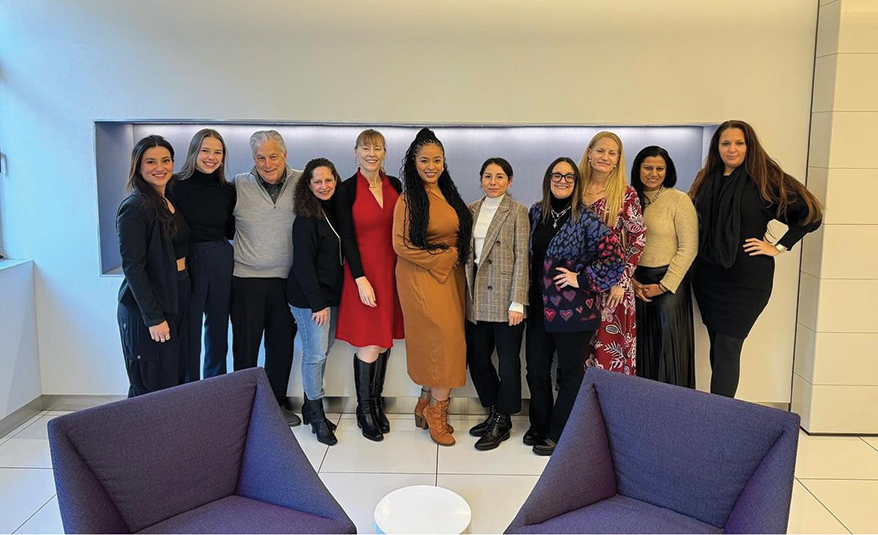
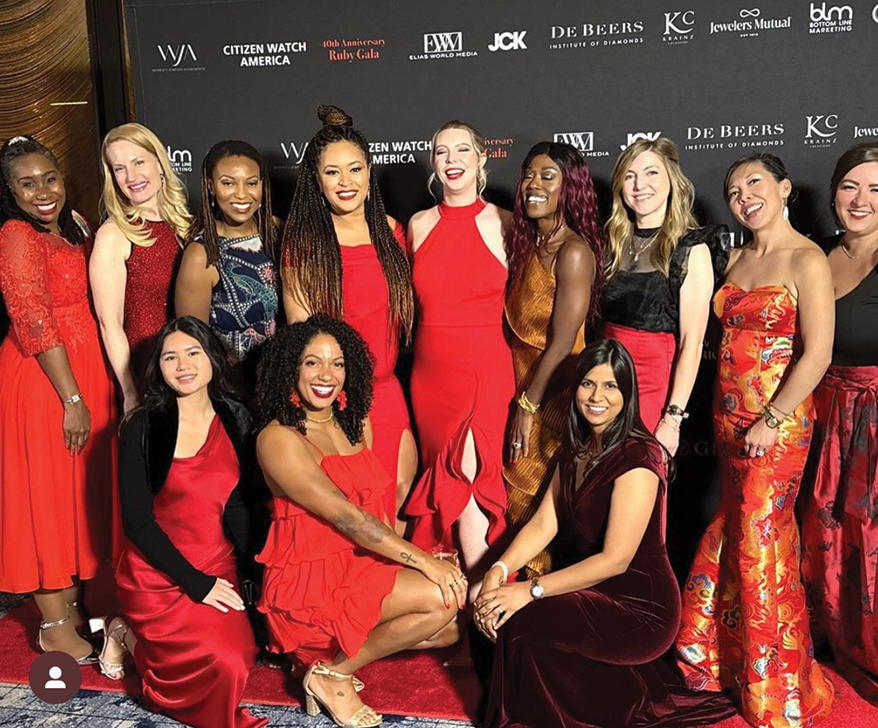
In 2020, after the death of George Floyd, Jenkins-Pérez found herself pulled into conversations along with other people of color in the jewelry business by industry leaders asking how they could better support them.
“It was like we were all coming out of the woodwork,” she says. “We were like, ‘Why don’t we have a call to get to know each other?’ That turned into how the industry could best support Black professionals, which led to the organization of BIJC. We’ve provided scholarships, grants, design competitions, fundraising events. We’ve made it possible for BIJC members to attend various events and trade shows. It’s been a ride, but it’s been great.”
That said, Jenkins-Pérez hopes that one day, there isn’t a need for DEI organizations and roles. “I hope that the industry and world at large become diverse enough and inclusive enough that we don’t need people reminding and doing all this work to advance folks,” she says. “I want people who feel left out and excluded to feel warm and welcomed.”
Advertisement
THE INDUSTRY CHEERLEADER
John Carter is all about championing others. By serving on hometown boards, national jewelry industry organizations, and charities, the president and CEO of Jack Lewis Jewelers in Bloomington, IL, learns about community strengths and how to promote them. And in his own store, he shares a wide spotlight with staffers who’re “proud of where they work,” he says.
During Carter’s recent tenure as president of the board of directors of the American Gem Society (AGS), he celebrated AGS’ and GIA’s decision to join forces. He opined to readers of INSTORE about the sense it made for GIA to absorb AGS Laboratories, allowing AGS to focus solely on education and membership.
“It’s fitting that AGS Laboratories’ legacy should wind up in [GIA’s] capable hands,” he shared in a letter in the November 2022 issue. “AGS and GIA are sibling organizations; they share the same founder, and their missions are connected.”
Plus, by serving as the present-day chairman of AGS’ Gemological Sciences Committee, which helps set diamond grading and appraisal standards for title holders, he impacts the organizational pillar of peer learning. “AGS reinforces core ethics through education,” he maintains.
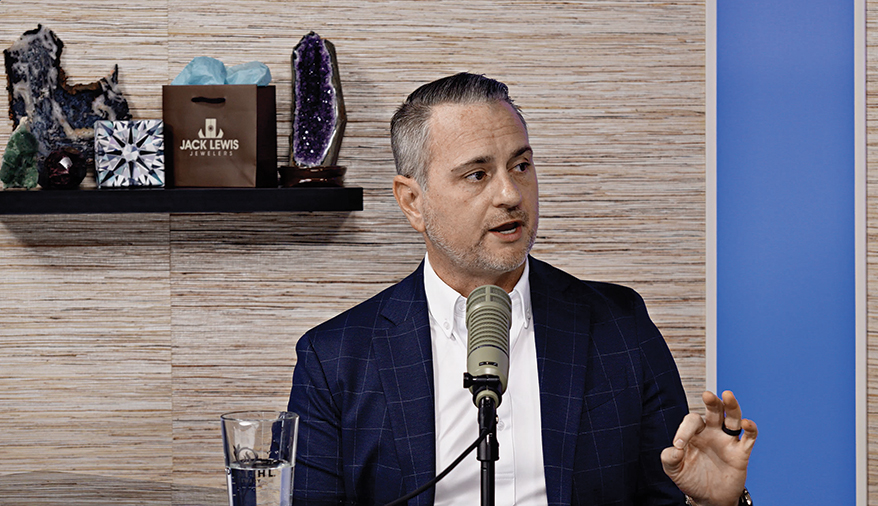
John Carter (above) covers jewelry-related topics to educate his clients via his YouTube “CarterCast” series.
In his store’s social media channels, he puts hard-working employees and neighboring merchants centerstage through videos and other visuals.
“We have always used our social channels to promote our people, not just our product,” he explains.
In his “CarterCast” series on YouTube, he and Joshua Shull of Joshua OneNine Marketing, a local agency, cover topics like the inherent value of diamonds and how to surprise a partner with an engagement ring. Guests include Missy Ranney, the store’s vice-president, who joins to cover fashion trends like yellow gold and designer engagement rings.
More staffers can be spied on the @jacklewisjewelers Instagram account. Sales associates Holly Templin, Amanda Osman, and Devan Treliving star in a “Wear in the World” series, visiting local proprietors to give them a shout out while wearing a mix of styles available for purchase at Jack Lewis Jewelry.
“Including other businesses and venues in weekly posts reinforces the bonds we have with our community and further integrates us into the fabric of our local market,” Carter explains. “Understanding how social media users consume content and constantly evolving our strategy is one of the things our marketing team has always been good at doing,” he says.
THE SHOP SAVANT
David Geller, former jewelry retailer and author of Geller’s Blue Book to Jewelry Repair and Design, comes by his enthusiasm for the jewelry business honestly: He’s a 14th-generation bench jeweler.
“My father and grandfather were diamond setters in New York,” says Geller. “My father came to Atlanta in 1939 and started a wholesale business and trade shop. When I turned 16, he got me a car, a 1960 Rambler, for the purpose of coming to work after school. That’s when I started learning jewelry work at the bench.”
In 1974, Geller opened a trade shop called Jewelry Artisans, which did primarily repairs and custom work. But in the 1980s, he nearly had to declare bankruptcy. He says it was because he didn’t know how to price repairs correctly. An accountant persuaded him to put his jewelers on 100% commission so that they could accurately determine his costs. “So we had our five jewelers and a waxer all go on a time clock, found out how long it really took, and then I wrote my price book in 1988.”

(clockwise from top left) David Geller with Stuller founder Matt Stuller; in his retail shop during his first year in business, 1974; and with Olympian Diamonds’ Aleah Arundale at an industry event.
To say Geller’s price book has changed the way jewelers do business is putting it mildly. The book is now the standard for benchwork pricing. “My price book is my legacy. When I retire, I want the book to continue, because I’ve heard so many stories from people that it has changed their life.”
In January 2000, Geller sold his store and started his consultancy, Jeweler Profit, which allows him to help retailers with QuickBooks and with implementing his price book. “Prior to the pandemic, I used to do store visits, about 18 a year,” he says. “I’ve spoken in Las Vegas on making money in repairs, and it was standing room only. I brought 75 books with us, and within 15 minutes, we had sold all 75. I have spoken to three-quarters of the JA state associations, every buying group, the SMART Jewelry Show and more.”
And as readers of INSTORE know, Geller has contributed a regular column since the magazine’s inception, covering shop-related topics that no other writer will touch. “I want retail store owners to know three things. One, how to handle inventory, because otherwise it causes lots of debt. Two, how to handle shop sales better. The shop should have the same margin as the showroom plus 5 more points. And three, how to train staff to sell. I find a lot of jewelry stores just hire people and hope to God that they sell stuff and then bitch and moan when they don’t. It’s because they don’t know how to train.”
THE MERCURY VANQUISHER
Toby Pomeroy’s mission is to ban mercury from artisanal gold mining. It’s a charge he took up in 2004 after reading the No Dirty Gold website; contents of it revealed the harmful impacts of mercury and cyanide in artisanal and small-scale gold mining (ASM) communities. Some use mercury to collect gold and occasionally mishandle tailings, harming ecosystems and displacing indigenous people.
“Mercury in the environment is absorbed by creatures up the food chain,” Pomeroy explains. “From the waters around the mining area to the people who raise food, mercury contaminates everything.”
At that point, Pomeroy was entrenched in a career as a jewelry designer known for forged hoop earrings, among other offerings, but decided he could no longer make jewelry unless this toxic influence was addressed.
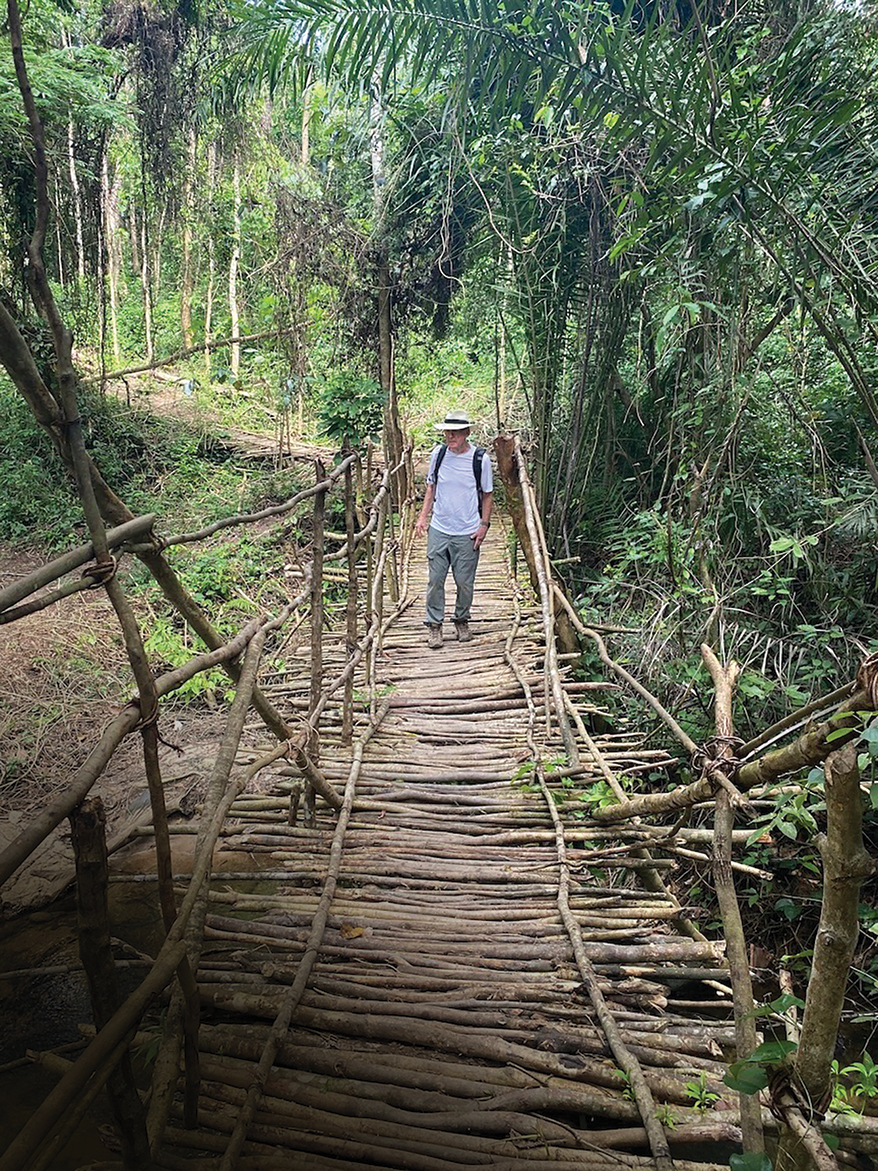
Toby Pomeroy on a 2023 Sierra Leone West Africa project, introducing local miners to mercury-free mining methods.
That quest led him to challenge Hoover & Strong to create a purely recycled metal offering separate from newly mined material. It was a groundbreaking initiative that many other designers embraced, but it still didn’t eliminate the mercury problem. He later joined the Alliance for Responsible Mining (ARM), serving on its board to try to establish socially and environmentally responsible practices in ASM communities (which ARM does to this day) but the bigger issue of mercury use still loomed. Then he read the works of futurist Peter Diamandis, author of books about dramatic changes to improve the lives of others, that inspired him to take an even bolder step. In 2017, he created Mercury Free Mining, making his no-mercury mantra his sole focus.
Donors have gotten onboard to help him fulfill the mission. Funding from the JCK Industry Grant Fund, GIA, Lashbrook, and many individual artisans have all fueled efforts to find alternatives to mercury use in ASM locations.
A grant enabled him to find a new type of portable ore processor called Goldrop that has demonstrated greater efficiency than a shaker table, a quintessential gold miner’s tool. Through a process called elutriation, a rising column of water in a container allows dense gold particles to drop, with less dense materials separating to tailings. The contraption has even appeared at AGTA GemFair Tucson twice (in 2023 and 2024), with units sold to miners as far away as Africa. “It’s a gamechanger,” says Pomeroy.
Another will be Pomeroy’s new helper: Bernadette Mack, a nonprofit professional hired to serve as a managing director. “I’ve been trying to run a global nonprofit by the seat of my pants,” he laments.
Did we leave someone out? Let us know about them at editor@instoremag.com!